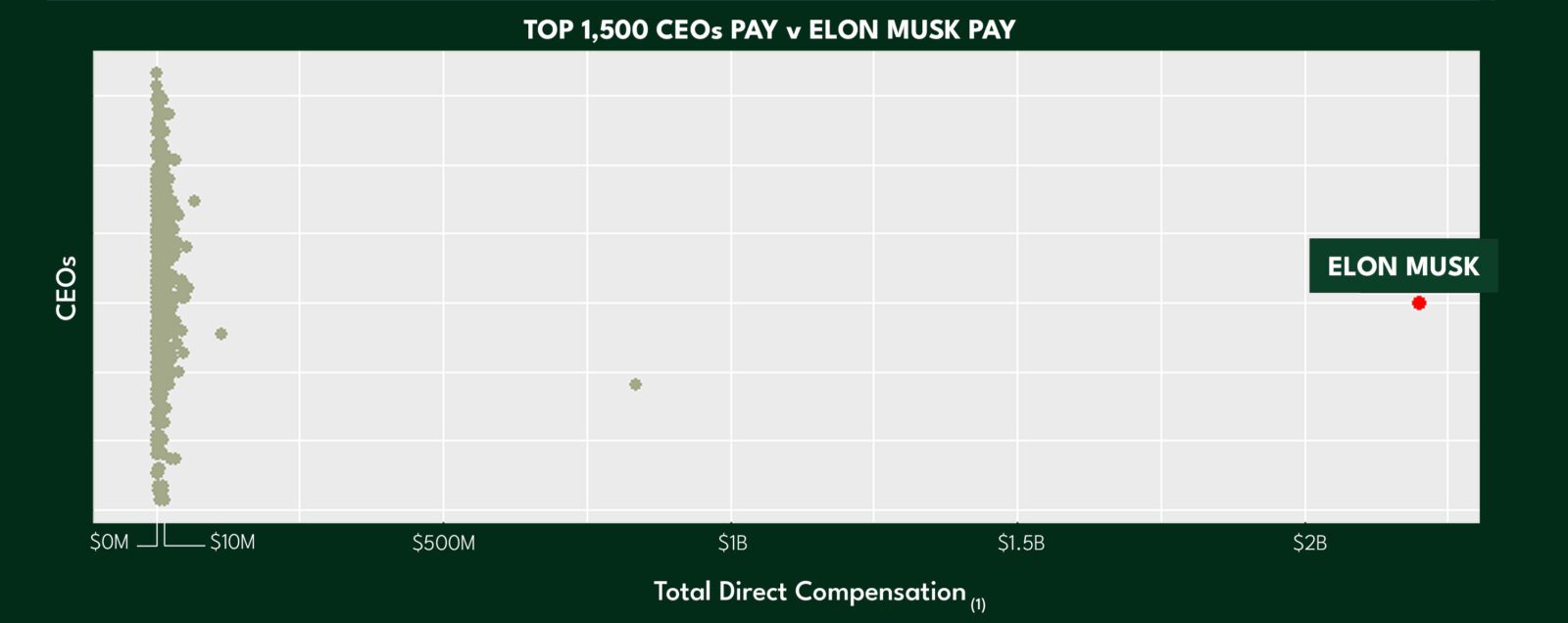At this time last year, 72% of CEOs were expecting a recession in 2023. While the circumstances underlying that prediction have evolved (hypergrowth and hyper-inflation have tapered off), and the Russell 1,000 has returned 18.3% YTD.
Compensation Considerations
Base Salary Expectations
While hyper-inflation for goods and services has dropped and labor market conditions have softened slightly, the market for good talent is still tight. WorldatWork conducted a survey for expected salary increases in 2024.
The average company budget for salaries across the US is expected to increase 4.1%. While this is lower than last year’s historic high, it is still above the norm of 3.5%.
2024 Short Term Incentive Payout Expectations
We expect there will be considerable debate through end of year meetings on short-term incentive payouts in Q1 2024 (for FY23 performance) as companies weigh historical inputs and go-forward implications. To aid those discussions, our firm has developed a proprietary prediction model that helps estimate future short-term incentive payouts by industry. While every company and industry is different given their unique dynamics and respective performance, our proprietary model suggests short-term incentive awards for the Fortune 500 in FY23 will average 110% of target.
2024 Short Term Incentive Plan Design Considerations
Given the degree of market volatility and the tight labor market conditions over the last few years, companies have continually revised their short-term incentive plans to ensure pay aligns with performance and effort. We expect 2024 to be no different.
There are many strategies committees can consider, and we expect a number of them will see adoption as companies finalize their 2024 plan designs. The following is a list short-term incentive design strategies Zayla suggests companies consider to navigate the unpredictable compensation terrain of 2024:
- Widen threshold and maximum performance goals to offset outcome unpredictability in 2024; thereby increasing the probability of payouts and muting the potential for significant compensation volatility;
- Increase the weighting of strategic, non-financial goals such as ESG, executing on company strategy, or increasing corporate culture initiatives;
- Utilize relative performance metrics as compared to peers to offset the macro effects on an absolute performance and deliver payouts based upon comparative performance.
- Incorporate shorter performance periods including setting goals for 6-month periods of time. Companies that employ this design will often “bank” pay with a hold back until the end of the 12-month period; and
- Increase the weight of discretion in an incentive plan – within reason. Discretion can be a lightning rod conversation with short-term incentive plan design, however, discretion is oftentimes needed to reconcile unforeseen events. To limit shareholder concerns, compensation committees may increase discretion below the CEO and explain the factors that led to their discretionary use. These adjustments are typically best received when shareholder returns are positive for the year.
Long Term Incentive Plan Design Considerations
Because of the market dynamics, long-term incentives have become the major headline for executive compensation over the past few years. In particular, the prevalence in private companies has essentially doubled in the past 15 years.
Given the need to navigate market volatility, motivate and retain in a tight labor market, and truly pay for performance, companies may consider the following design strategies for 2024 long-term incentive grant cycles:
- Similar to short-term incentives, companies may widen threshold and maximum performance goals to offset unpredictable outcomes; thereby increasing the probability of payouts and decreasing realized pay volatility – which is important for the retention of key talent;
- Consider shorter performance periods within a longer performance period. For example, companies may have a four-year vest but measure performance in 1-2 year increments. Again, this nuanced plan design can help navigate an unpredictable macro market with tight labor conditions;
- Consider moving the timing of awards and vesting to Q4. This is particularly helpful if ISS or activists have pay for performance concerns. Companies that award long-term incentives in Q1 or Q2 based upon market or history are at a disadvantage for not knowing what the rest of the year’s performance will be; thereby creating a possible disconnect between pay and performance; and
- While nearly 65% of the Fortune 500 are heavy users of relative TSR, companies not currently using a relative return metric may benefit from relative long-term incentive performance metrics, whether that is total shareholder return or another relevant metric. Similar to short-term incentives, this plan design can help offset macro effects of all boats rising or dropping and deliver payouts based upon relative comparative performance.
Change of Control & Severance Preparation
Merger and acquisition deal flow has been high the past 5 years with a little pause in 2023, but experts expect 2024 to resume the rapid pace of M&A activity. Compensation Committees should ensure their change in control and severance policies are well thought out ahead of any potential activity. Negotiating last-minute severance policies not only exposes key employees during a critical time period, but navigating 280G personal excise taxes of up to 20% in the final hours of a deal is a challenging and potentially expensive exercise. A few considerations are:
- Conduct succession planning to identify current skills and gaps, so when M&A activity comes up, the fit of the two organizations can readily be assessed.
- Review change of control and employment agreements to ensure they will protect employees in the event of a qualified termination during a change of control. Unprotected employees can create unnecessary fears, and early departures can derail a potential deal.
- Analyze any potential 280G safe harbor exposure. Whether public or private, 280g excise taxes can become problematic. There are a number of viable solutions like prior years compensation, consulting and non-compete agreements to help offset these liabilities, but as the saying goes an ounce of prevention is worth a pound of medicine.
Regulatory Considerations
Clawbacks
The SEC and stock exchange’s mandatory clawback policy requirement forced companies to adopt compliant policies by December 1, 2023, which cover incentive compensation received by executive officers after October 2, 2023. Given the relatively short compliance period allowed by the SEC, many companies may not have fully assessed if changes were also needed to existing clawback policies that typically covered a broader group of participants, allowed the recovery of both time-based and performance-based equity, and included a wider range of clawback triggers (for example, material code of conduct violation, reputational harm, cybersecurity breach, etc.) or if a broader clawback policy should be adopted. Additionally, while recoupment of cash-based incentives is relatively straightforward, the impact of a clawback policy on share-based compensation is complex.
Compensation committees may want to better understand how the new mandatory policy interacts with the broader policy or consider whether to adopt a broad policy over time. In addition, companies are required to disclose their SEC mandated clawback policy as an exhibit to the 10-K or 20-F, and it is likely some “best practices” may be identified from this disclosure.
Non-Competes
With the Federal Trade Commission expected to vote on a rule to ban non-competes in April 2024, Compensation Committees will have to think about alternative methods to retain key executives if and when they are ever banned. A ban would increase the importance of incentives and create an even higher emphasis on offering incentives that help to retain executive talent.
Board Diversity
Nasdaq listing standards have changed going forward. After an emphasis for board diversity, regulations to be listed on Nasdaq include having at least one diverse director by December 31, 2023 and two diverse directors by December 31, 2026. This rule was recently challenged in the court system, but upheld by an appeals court in October 2023. What is Nasdaq Rule 5605(f)(1)? “Diverse means an individual in one or more of the following categories: Female, Underrepresented Minority, or LGBTQ+.” companies should consider providing diversity details in their proxy statement disclosures.
Equity Timing Policy
The SEC rules are requiring disclosures on timing of equity awards. These rules are to help prevent companies from granting awards right before announcing anything that alters stock price with a favorable outcome. Rule 10b5-1 requires companies to describe their timing in proxy statements. This includes the date of grant, number of shares, price, and grant date fair value. This is to prevent non-routine grants and insider trading information before market moving non-public information is released.
Companies may consider creating a formal policy for grants if one is not in place to ensure award practices are SEC compliant and in a consistent routine.
Strategic Business Thinking Still Needed
While the recession risk has fallen significantly since the start of the year (15% likelihood according to Goldman), volatility is expected to hang around. Changing consumer sentiment, cost fatigue, rising debt servicing costs and a tight labor market for good talent will continue to increase strains on consumers and businesses. As economic volatility persists, committees should be able to provide good rationale when exercising discretion in compensation decision-making. Being able to weigh both short-term volatility and long-term company strategy and growth will remain prudent for board members as they think about compensation decisions.



